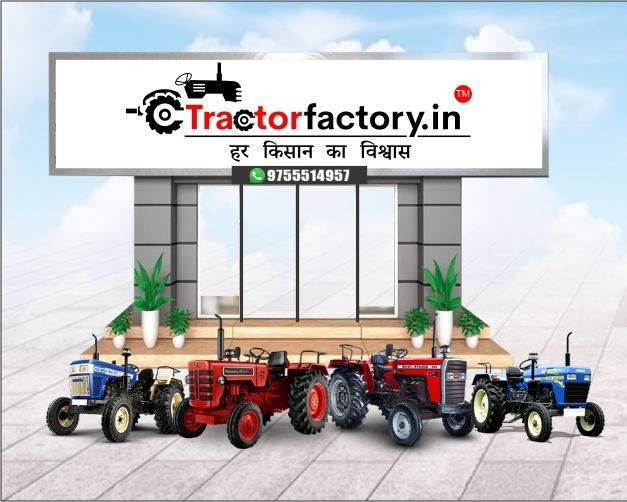Buying a purana tractor (used tractor) often feels like a smart financial move — and in many cases, it truly is. You get a powerful machine for a lower price, helping you save money while still getting the job done. For many farmers, small business owners, and agricultural contractors, a second-hand tractor can be the key to expanding operations without spending a fortune.
However, while the cost savings are attractive, owning a purana tractor isn’t always as simple as it seems. There are some hidden challenges that buyers often don’t think about until after the purchase — issues that can affect performance, maintenance, and even your productivity.
If you’re planning to buy a used tractor soon, understanding these challenges can save you a lot of time, money, and frustration later.
Let’s explore the five challenges with purana tractors you may not see coming.
1. Hidden Mechanical Issues That Don’t Show Up Immediately
One of the biggest challenges with any used vehicle — especially tractors — is hidden mechanical problems. Tractors are built for heavy-duty work, and over time, components like the engine, clutch, transmission, and hydraulic systems can wear down. Unfortunately, not all of these issues are visible during a quick inspection.
-
Engine wear: The tractor might start smoothly during a test drive but could begin overheating or producing smoke after long hours of use.
-
Hydraulic leakage: A small leak in the hydraulic system might not be noticeable at first, but it can affect lifting power and cause costly repairs later.
-
Transmission or gear issues: Older tractors often develop problems shifting gears, especially if they’ve been used for towing or ploughing on rough terrain.
-
Electrical faults: Things like faulty wiring, weak batteries, or non-functional lights can go unnoticed until you’re using the tractor in real conditions.
How to avoid this challenge:
Always conduct a thorough pre-purchase inspection. Bring along a trusted mechanic or technician to check the engine compression, oil condition, hydraulic performance, and gear system. It might cost you a small inspection fee, but it can prevent big repair bills later.
2. Difficulty in Finding Spare Parts and Service Support
Another challenge many buyers face is finding the right spare parts for their purana tractor. As tractors age, certain parts become harder to find — especially for older or discontinued models. Even if you find compatible replacements, they might not be genuine or reliable.
-
Brand and model issue: Lesser-known brands or imported models may not have local dealerships or spare part suppliers.
-
Availability delay: Waiting weeks for a replacement part can cause downtime during critical farming periods.
-
Cost of genuine parts: Sometimes, the price of a few spare parts adds up to nearly half the cost of the tractor itself.
Service support is another side of this issue. New tractors usually come with service contracts or authorized service centers nearby. But for old tractors, especially those out of warranty, you might have to rely on local mechanics whose expertise can vary.
Tip to manage this:
Before buying, check whether the brand has a strong service network in your area. Also, confirm that essential parts like filters, clutch plates, hydraulic seals, and tires are easily available. It’s better to choose a slightly more expensive tractor from a common brand than a cheaper one with limited parts availability.
3. Fuel Efficiency and Performance Drop
A used tractor rarely performs like a new one, no matter how well it’s maintained. Over time, engine efficiency naturally declines, resulting in higher fuel consumption and reduced power output.
-
Older engine technology: Many purana tractors have older engines that lack modern fuel-saving systems.
-
Worn components: Components like injectors, pumps, and filters may not deliver the same performance they once did.
-
Reduced pulling power: You might notice the tractor struggling with heavy loads or not covering as much ground in the same time as a newer model.
This not only increases your fuel expenses but can also slow down your work, especially during busy farming seasons. In some cases, continuous heavy use without engine reconditioning can lead to complete breakdowns.
Smart solution:
Calculate the fuel cost per hour of operation when comparing used tractors. If a newer model saves significant fuel, it might justify a slightly higher price upfront. Regular servicing, timely oil changes, and proper operation can also help maintain performance for longer.
4. Outdated Technology and Comfort Limitations
Agricultural technology has evolved rapidly in recent years. Modern tractors now come with features like power steering, automatic transmission, advanced hydraulics, better suspension, and even air-conditioned cabins. Unfortunately, most purana tractors lack these conveniences.
This might not seem like a big deal at first — but after long working hours in the field, comfort and ease of use make a huge difference.
-
Manual steering: Older tractors often require more physical effort to steer, especially on rough or muddy terrain.
-
Basic hydraulics: Lifting heavy implements or adjusting angles can be slower and less precise.
-
Poor operator comfort: Simple things like seat design, vibrations, and noise levels can make long hours tiring.
-
No advanced safety features: Features like roll-over protection, better brakes, and night lights are missing in older models.
While these limitations don’t make the tractor unusable, they can reduce productivity and operator satisfaction — especially if you’re used to modern machinery.
What you can do:
Look for used tractors from the latest possible model years, or ones that already have upgraded features. Some basic modifications — like adding a better seat, LED lights, or a canopy — can improve comfort without much cost.
5. Legal and Documentation Issues
One challenge that surprises many buyers is the paperwork problem. When buying a purana tractor, it’s crucial to ensure that all legal documents are in order. Missing or incorrect paperwork can cause serious issues during ownership transfer or resale.
Common documentation issues include:
-
Missing RC (Registration Certificate) or ownership title
-
Expired insurance or pollution certificate
-
Unpaid road tax or pending challans
-
Tractor registered in a different state
-
Discrepancies between engine/chassis numbers and registration records
If you ignore these details, you might face delays in registration transfer or even risk your tractor being seized during inspection.
How to stay safe:
Always verify all documents before payment. Make sure the tractor has a clear ownership record and valid RC book. Check the chassis and engine numbers on the machine against the paperwork. If possible, complete the sale through official transfer channels to avoid any future legal disputes.
Conclusion
A purana tractor can be a great investment — but only if you know what to expect. While the lower price tag is tempting, there are several hidden challenges that can affect long-term value and performance.
Here’s a quick recap of the five major challenges:
-
Hidden mechanical issues that don’t appear during short test drives
-
Difficulty finding spare parts and reliable service
-
Reduced fuel efficiency and performance over time
-
Outdated features and comfort limitations
-
Legal or documentation problems during ownership transfer
By understanding these potential pitfalls, you can make a smarter and safer buying decision. Always take your time to inspect, verify, and compare before finalizing the deal. And remember — a purana tractor that’s been well-maintained, properly documented, and serviced regularly can still deliver years of reliable service.


